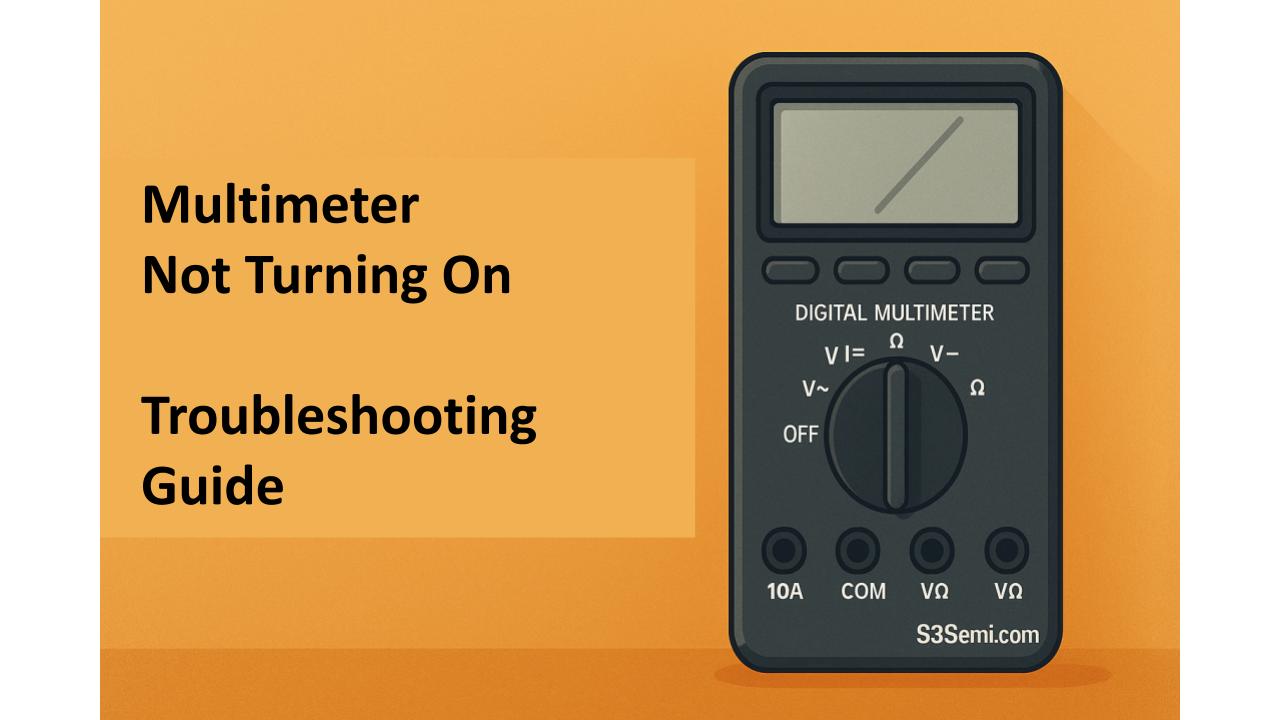A multimeter that won’t power on can be frustrating—especially when you’re in the middle of diagnosing a circuit or measuring voltage. Whether it’s a simple battery issue or a deeper internal fault, this guide walks you through the most common reasons your multimeter isn’t turning on and how to fix it.
⚠️ Common Symptoms
- No display or backlight
- No beeping or sound when pressing buttons
- Screen flickers then dies
- Functions not working despite new batteries
🔋 Check the Battery
The #1 cause of a multimeter that won’t turn on is a dead or weak battery.
✅ What to do:
- Open the battery compartment.
- Replace with a fresh 9V or AA/AAA battery (as per your model).
- Ensure the battery is inserted with the correct polarity.
🧠 Pro Tip:
Even if the screen lights up for a moment, a low battery can cause the meter to shut down or behave erratically.
🧪 Inspect the Battery Contacts
Battery terminals can corrode or lose spring tension over time.
✅ What to check:
- Look for green or white corrosion around the contacts.
- Gently clean terminals using isopropyl alcohol and a cotton swab.
- Bend contacts slightly outward if they aren’t making good contact.
⚙️ Check the Fuse (If Backlight Works but Readings Don’t)
If your multimeter powers on but doesn’t respond to measurements, the internal fuse may be blown.
✅ What to do:
- Open the case carefully.
- Locate and test the fuses (typically near the input jacks).
- Replace with a fuse of the exact rating (often ceramic fast-blow).
Note: A blown fuse won’t prevent the screen from powering on, but can affect functionality.
🌧️ Look for Water or Dirt Damage
If your multimeter was exposed to moisture or dust, internal contamination could be shorting the circuit board.
✅ What to do:
- Carefully open the case.
- Inspect the board for dust, corrosion, or residue.
- Clean with 99% isopropyl alcohol and let it dry thoroughly.
🔁 Try a Power Cycle or Reset
Some digital multimeters have simple logic controllers that can glitch.
✅ Reset procedure:
- Remove the battery.
- Hold the power or range button for 10–15 seconds.
- Reinsert the battery and try powering it back on.
🧩 Internal Component Failure
If none of the above works, the issue may be:
- Burnt component on PCB
- Cracked solder joints
- Faulty LCD connection
- Worn out power button switch
At this point, a repair may require circuit board testing, reflowing solder, or replacing internal components.
🧰 When to Replace or Repair
✅ Replace:
- Budget multimeters under $30
- Severe corrosion or water damage
- No signs of life even after battery and fuse checks
🛠️ Repair:
- Premium meters (Fluke, Extech, etc.)
- Still under warranty
- Just needs internal cleaning or fuse replacement
🌐 What Users Say on Forums
- Reddit: “Dead screen was just a corroded battery contact. Cleaned it and it powered up.”
- EEVblog: “If the unit clicks or flashes briefly, it’s usually a dying battery or LCD connector issue.”
- DIY Stack Exchange: “Resetting the logic by holding the button while inserting the battery actually worked.”
✅ Summary Table
| Problem | Solution |
|---|---|
| Dead battery | Replace with new one |
| Corroded terminals | Clean and reseat |
| Loose fuse | Inspect and replace |
| Moisture/dirt | Clean with alcohol |
| Glitched firmware | Reset via power cycle |
| No signs of life | Possible internal failure – consider replacement |
If your multimeter isn’t turning on, don’t give up—it’s often something simple like a battery, fuse, or corrosion issue. With a little patience and basic tools, you can often bring it back to life.
